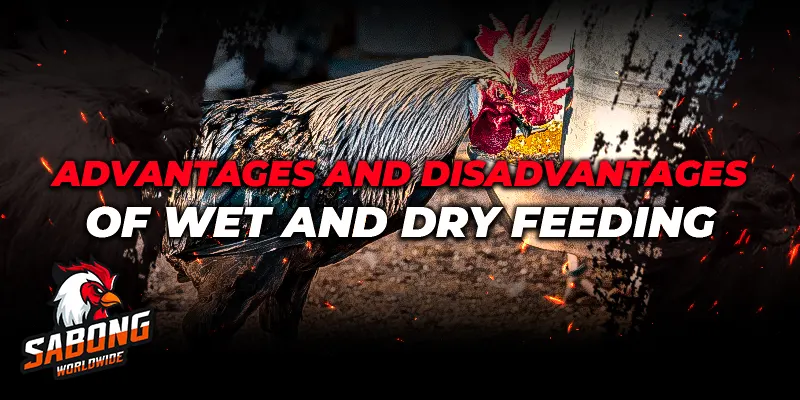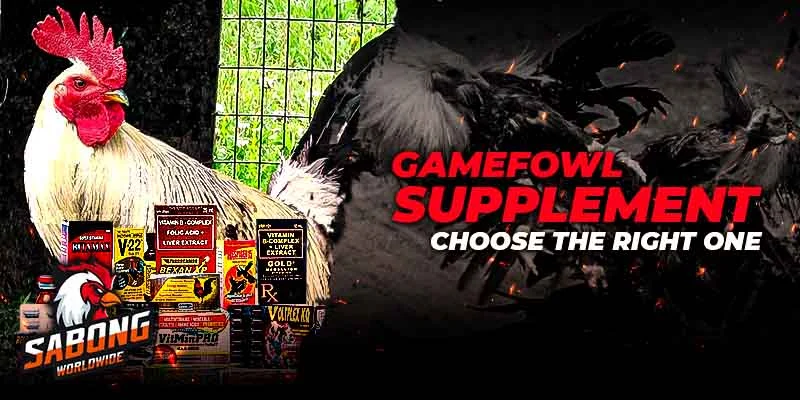Choosing between wet and dry feeding practices is a subject of ongoing discussion among gamefowl breeders. Wet feeding involves soaking grains in water to soften them, promoting easier digestion and increased hydration. Additionally, it allows for the seamless incorporation of supplements and medications. Conversely, dry feeding offers convenience, extended shelf life, and a cleaner feeding environment. The optimal feeding method for individual gamefowl depends on various factors, including the birds’ preferences, local climate, and the breeder’s logistical considerations.
The Factors of Wet and Dry Feeding
Choosing the right feeding method for your gamefowl is essential for their optimal health and performance. Both wet and dry feeding practices offer specific advantages and drawbacks depending on several factors. Understanding these factors in detail will help you make an informed decision.
Wet Feeding
Wet feeding is a common practice in gamefowl management, offering a range of potential benefits and considerations. Here’s a look at the key factors involved in wet feeding for your gamefowl:
- Digestion: Soaking softens grains (corn, rice, pellets, etc.), making them easier for gamefowl to digest. This is especially beneficial for birds with sensitive digestive systems or during stress like molting.
- Hydration: Wet feed provides additional water intake, which is crucial in hot climates or to combat dehydration.
- Supplement Delivery: Supplements, electrolytes, vitamins, or medications can be easily mixed into wet feed, ensuring the bird consumes the necessary nutrients.
- Palatability: The softened texture and potential flavor additions can make the wet feed more appealing to some gamefowl.
- Preparation: Wet feeding requires planning for soaking and involves more preparation time than dry feeding.
- Spoilage Risk: Wet feed spoils faster, especially in warm weather, requiring frequent changes and careful monitoring to prevent health issues.
- Hygiene: Wet feeding necessitates meticulous cleaning as it can lead to a messier feeding area, potentially attracting pests or mold.
Dry Feeding
Dry feeding offers gamefowl breeders distinct advantages and considerations. Here’s a look at the key factors associated with this method:
- Convenience: Dry feeding is the most straightforward method, requiring no pre-soaking or additional preparation time. You simply provide dry grains and pellets as is.
- Storage: Dry feed has a longer shelf life and is less susceptible to spoilage, making storage simpler and reducing waste.
- Cleanliness: Dry feeding results in a tidier feeding environment, reducing the risk of attracting pests or mold growth.
- Digestion: While generally fine for healthy birds, dry grains may be slightly harder to digest for some gamefowl, particularly those with sensitivities.
- Hydration: With dry feeding, you must ensure your gamefowl have constant access to clean water for adequate hydration.
- Supplementation: Incorporating supplements and medications into dry feed can be trickier than wet feeding. Careful mixing or alternative delivery methods might be needed.
Careful consideration of wet and dry feeding factors will help you create a feeding strategy that aligns with your gamefowl’s needs, resources, and the local climate. It’s essential to observe your birds’ responses closely and adjust your approach accordingly for their optimal health and performance.
Advantages and Disadvantages of Wet and Dry Feeding
Wet and dry feeding methods for gamefowl each offer distinct advantages and disadvantages. Understanding these differences is crucial for selecting the strategy that best promotes your birds’ health and performance. Here it is:
Advantage of Wet and Dry
Wet Feeding – Wet feeding can be beneficial for gamefowl in several ways. Soaking and fermenting the grains can help eliminate hazardous materials like toxins and phytic acid and improve the assimilation of protein. Fermenting the feed makes the fibers more digestible and enhances the birds’ performance.
Dry Feeding – Advantages of dry feeding include convenience, cleanliness, and a lower spoilage risk than wet feeding. Dry feeding also eliminates the risk of botulism, a potentially fatal condition caused by bacteria that can thrive in moist environments. However, providing grits is crucial when dry feeding because it helps gamefowl effectively grind the feed for proper digestion.
Disadvantage of Wet and Dry
Wet Feeding – Wet feed is a main source of the bacteria that causes botulism, which can make chickens very sick. Wet feeding has also been shown to negatively affect the efficiency and growth of broiler chickens under heat-stress conditions, though this can be improved by fermenting the wet feed.
Dry Feeding – A disadvantage of dry feeding is that gamefowl accustomed to soaked feeds might not readily consume dry grains. To address this, cooking the dry grains can soften them and make them more palatable, encouraging your gamefowl to eat.
The optimal feeding approach depends on your birds, practical considerations, and potential health risks like botulism. Observing your gamefowl’s response to each method will guide you toward the most effective feeding strategy.
Gamefowl Feeding Process
Gamefowl nutrition plays a vital role in their health and performance. Both wet and dry feeding methods have their specific steps and considerations. Let’s outline the processes involved with each approach.
Wet Feeding Method
- Choose Your Grains
Select a high-quality gamefowl feed mix designed for your birds’ needs (breeding, conditioning, maintenance, etc.). Common grains include cracked corn, rice, and commercially formulated pellets.
- Soaking
Choose an appropriate amount of high-quality gamefowl feed for your birds, place it in a clean container, and cover it with several inches of water, allowing it to soak for several hours or overnight to achieve the desired level of softening.
- Additions (Optional)
Add supplements (vitamins, electrolytes, etc.), medications as needed, or small amounts of flavor enhancers (like raw egg or molasses) to the wet feed mix.
- Feed
Drain excess water (if needed), offer the wet feed in clean containers, and remove uneaten portions promptly after a few hours to prevent spoilage.
Dry Feeding Method
- Choose Your Feed
Select a high-quality gamefowl feed formulated for your birds’ specific needs (conditioning, breeding, maintenance, etc.).
- Provide Grits
Since dry feeding doesn’t aid digestion through softening, offering grits is crucial. Grits help gamefowl grind the feed in their gizzard for proper digestion.
- Feeding
Place the dry feed in clean feeding containers. Ensure the containers are accessible to your gamefowl.
- Fresh Water
Always provide access to a constant supply of fresh, clean water. This is essential for hydration and digestion.
- Monitor Intake
Observe your birds’ eating habits and adjust the amount of dry feed offered accordingly to avoid overfeeding or wasting feed.
Providing high-quality feed and fresh water is paramount regardless of your chosen method. Observing your gamefowl’s feeding habits and preferences will help you fine-tune your feeding program for their optimal well-being.
Conclusion
The optimal feeding strategy for your gamefowl is a personalized decision. Both wet and dry feeding offer benefits and considerations. Weigh the pros and cons of each method carefully about your birds’ individual needs, your logistical capabilities, and the local environment. Regardless of your approach, prioritize high-quality feed, fresh water, and meticulous hygiene practices. Most importantly, observe your gamefowl closely—their health, energy levels, and performance will be the ultimate indicators of whether your feeding strategy is supporting their success.
For more comprehensive advice, detailed strategies, and practical tips, visit Sabong Worldwide.








